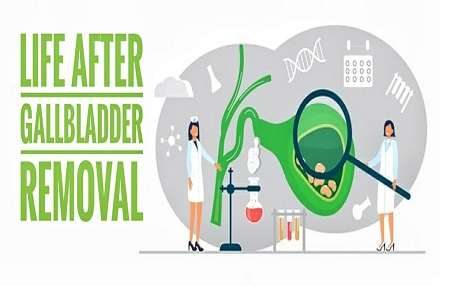The gallbladder is a pear-shaped organ that is around 4 inches in length. It’s immediately beneath your liver in the top right corner of your stomach. You can survive without the gallbladder because it is not a critical organ. It does, however, have a purpose: by concentrating, storing, and releasing bile produced by your liver, it assists in the digestion of fatty foods.
You may be looking forward to gallbladder removal (cholecystectomy) and relief from your agony if you’re suffering from the pain and other symptoms that a malfunctioning gallbladder may bring.
If you are facing problems after gallbladder removal avoid ignoring them. You can visit to doctors having expertise in this field. You can visit one of the most renowned Laparoscopic and bariatric surgeons in Mumbai – Dr. Harsh Sheth
After gallbladder surgery, you may expect to live a completely normal life, although you may have certain side effects linked to the way your digestive system absorbs fatty meals. Loose stools or diarrhea, bloating, cramps, and excessive gas may occur in reaction to fatty meals or specific foods. Fortunately, these issues generally only last 30 days or fewer, and they afflict about half of all gallbladder removal patients.
The removal of the gallbladder is a surgery that Dr. Harsh Sheth is familiar with. Continue reading for his tips on dealing with digestive issues following a cholecystectomy.
After surgery, take a rest.
Almost always, Dr. Harsh Sheth prefers the laparoscopic technique for gallbladder removal since it is a less invasive procedure. When compared to open surgery, laparoscopic surgery offers a lower chance of complications during and after the procedure, as well as a shorter recovery period.

In fact, the vast majority of our laparoscopic surgery patients can go home the same day. However, don’t expect to be able to return to your normal activities right away. Allow yourself a day or two of rest for your body.
Eat a simple-to-digest meal for two to three days to pamper your stomach. Start with clear liquids, broth, and gelatin, then on to solid foods.
Smaller amounts are better, and deep-fried meals should be avoided.
Large meals and high-fat foods can induce discomfort and bloating while your system learns to digest fats without the help of a gallbladder. Smaller, lower-fat meals spaced throughout the day — six is a decent amount — are more comfortable for the stomach.
Avoid the following foods in the weeks following gallbladder surgery
- Mutton, beef, pork are examples of high fat containing meat products.
- High-fat dairy goods include cheese, ice cream, whole milk, and other high fat dairy products.
- Pizza
- Meat gravies, cream soups, and cream sauces
- Chocolate
You also avoid spicy meals during your initial phase of recovery because digesting these things is quite difficult. Instead of deep-frying, stir-fry your proteins in a skillet with a teaspoon of olive oil to decrease fat and add flavor.
High-fiber foods are essential for a balanced diet, but they may exacerbate gassiness and cramping following a cholecystectomy. We don’t recommend that you stop consuming fiber completely, but you should gradually include it into your post-surgery diet over a few weeks.
Food’s high in fiber that also produce natural gas include:
- Whole-wheat bread
- Nuts and seeds
- Legumes
- Some veggies that may be included in a salad are Brussels sprouts, broccoli, cauliflower, and cabbage.
- Bran flakes are a sort of breakfast cereal, for example.
Keep in mind that the cholecystectomy’s digestive side effects should diminish after one to four weeks of surgery. If your symptoms continue longer than 30 days, you should see a doctor.
Make an appointment with one of our experienced surgeon Dr. Harsh Sheth today to learn more about what to expect during cholecystectomy and after gallbladder removal.

